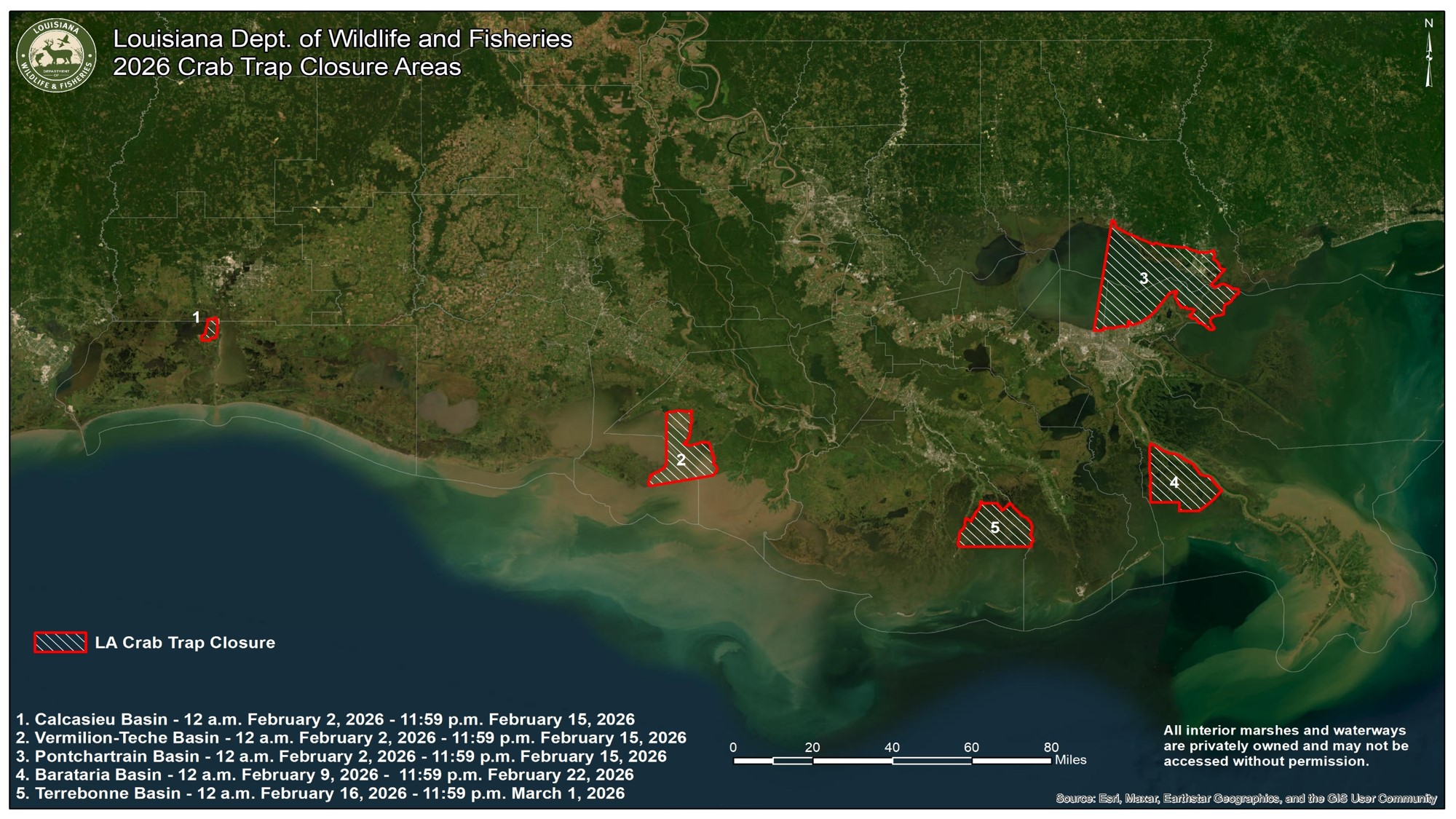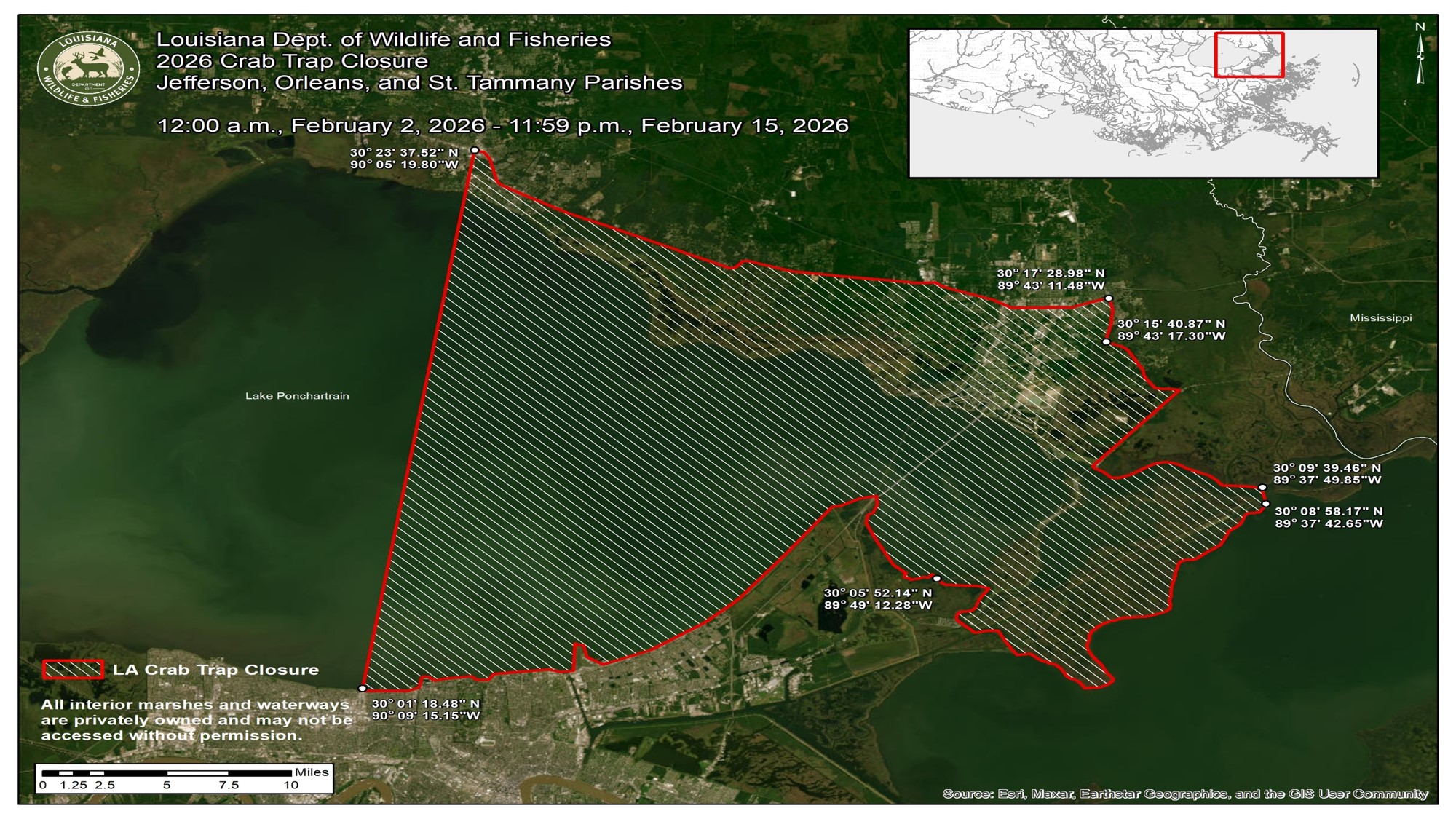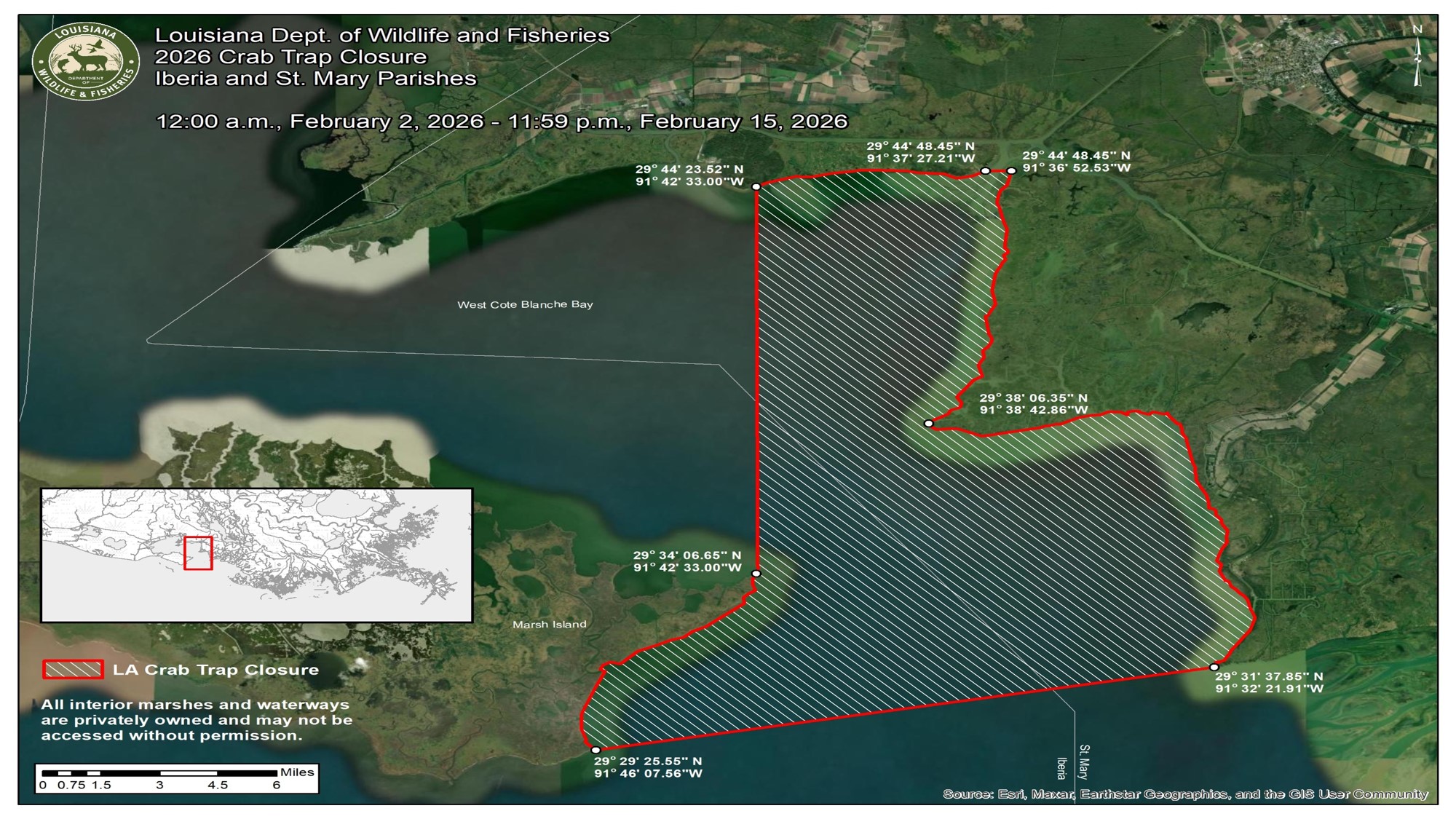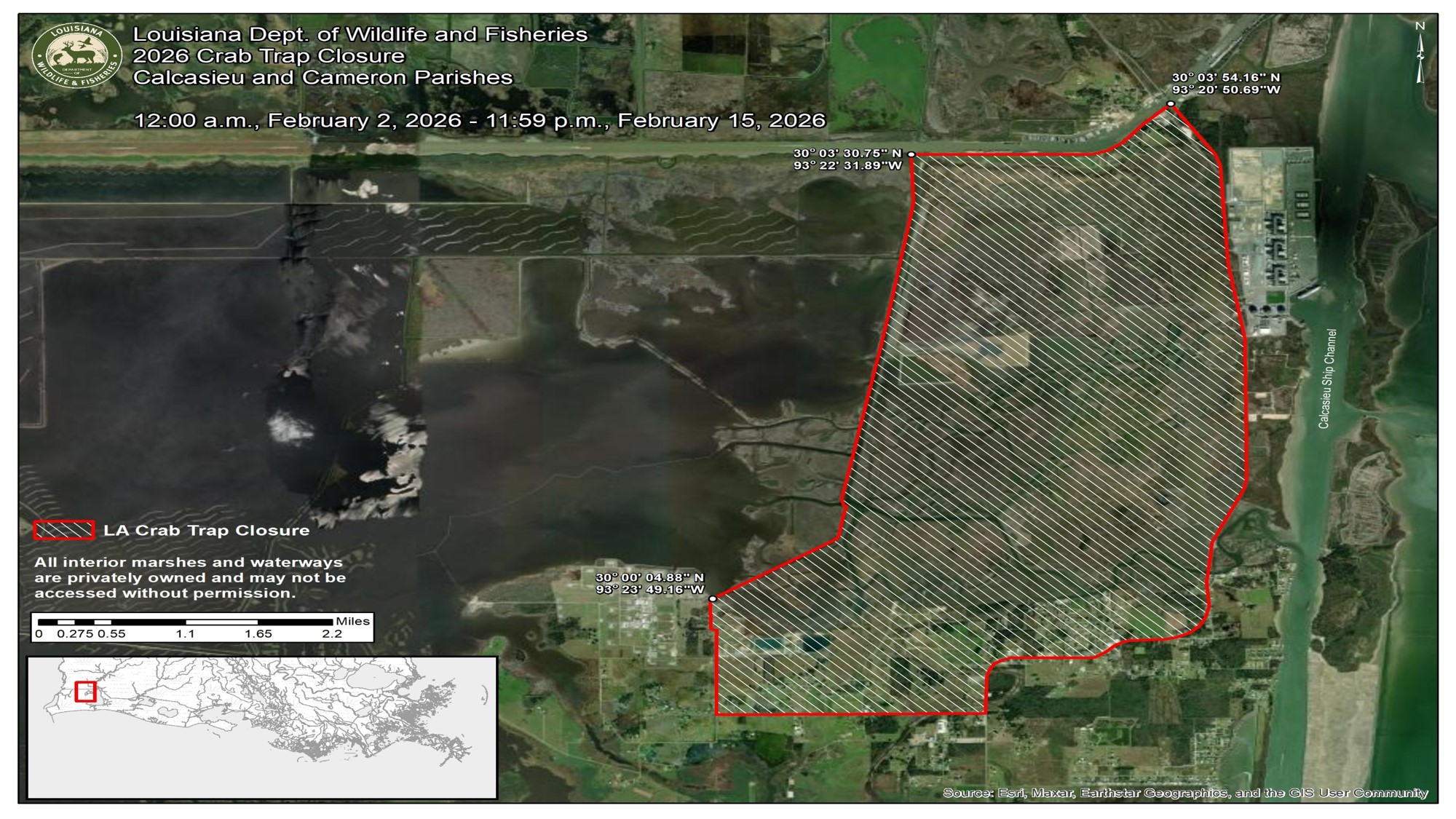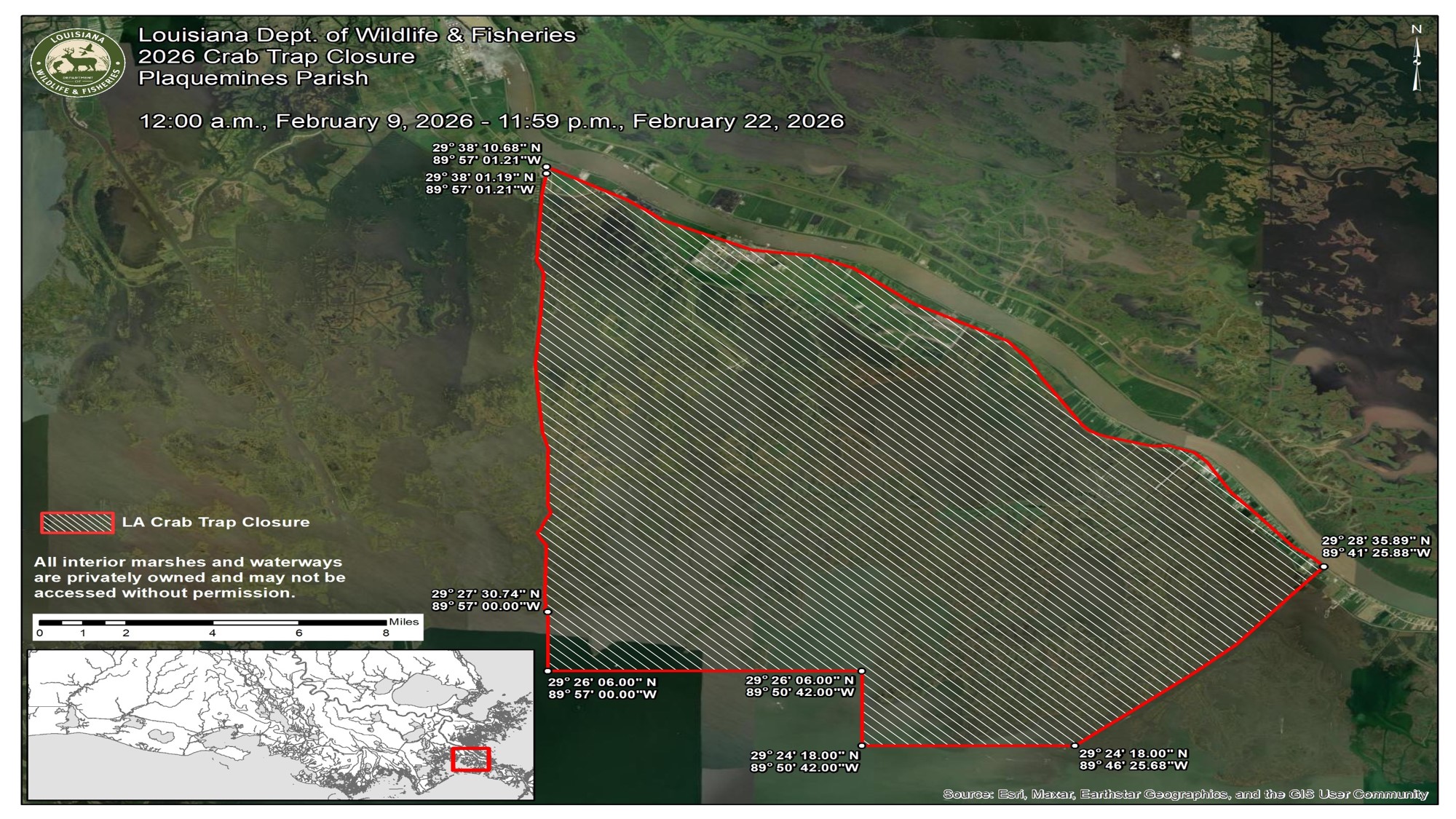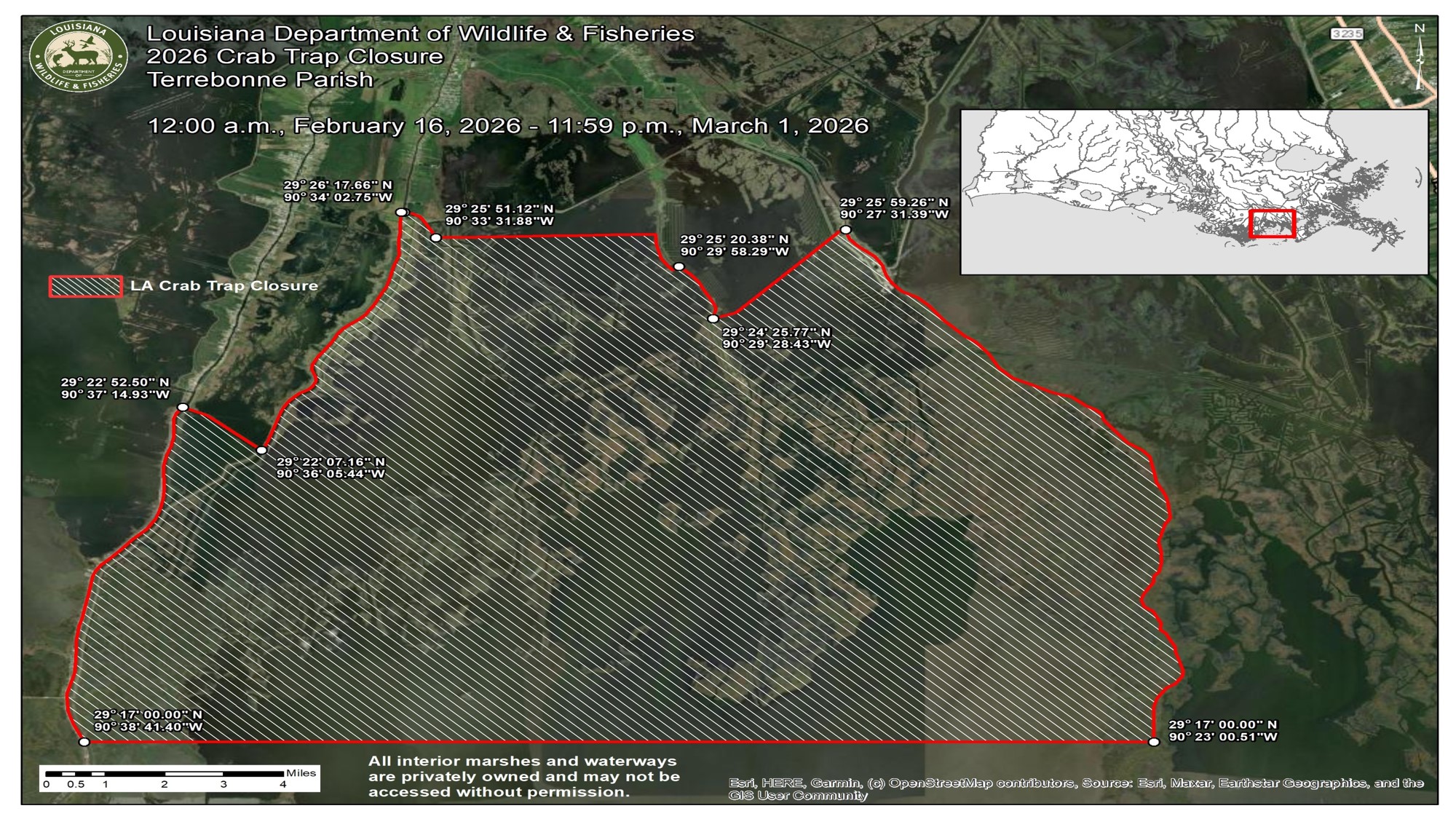| Year | Area(s) | Traps |
|---|---|---|
| 2004 | 2 | 6,894 |
| 2005 | 4 | 4,623 |
| 2006 | 1 | 2,935 |
| 2007 | 2 | 1,498 |
| 2008 | 1 | 1,234 |
| 2009 | 1 | 788 |
| 2010 | 1 | 477 |
| 2011 | 1 | 1,100 |
| 2012 | 2 | 2,798 |
| 2013 | 2 | 969 |
| 2014 | 1 | 1,051 |
| 2015 | 1 | 422 |
| 2016 | 3 | 2,580 |
| 2017 | 6 | 5,674 |
| 2018 | 5 | 4,061 |
| 2019 | 5 | 4,041 |
| 2020 | 6 | 4,188 |
| 2021 | 4 | 5,163 |
| 2022 | 4 | 815 |
| 2023 | 4 | 3,974 |
| 2024 | 6 | 2,142 |
| 2025 | 5 | 1,102 |
| Total | 67 | 58,529 |
Derelict Crab Trap Removal
Derelict crab traps are traps that have been lost or abandoned due to a number of reasons:
- Separated from their buoys by tides, currents, storms, or passing boats
- Caught in and displaced by shrimp gear
- Vandalism
- Improper disposal of old, unfishable traps
- Poor assembly or maintenance of lines and floats
- Abandoned by fishermen leaving the fishery.
Since most crab traps are made of vinyl coated wire mesh, it can take years for a derelict crab trap to degrade. In the meantime, these traps can “ghost fish”, which means they continue to capture blue crabs and other species. They can also create a navigational hazard for boats and become entangled in other fishing gear like shrimp nets.
The removal of derelict crab traps is essential for reducing mortality of blue crabs and other species due to ghost fishing. This also ensures safe navigation, reduces conflicts with other fisheries and user groups, and improves the aesthetics of state waterways.
Derelict Crab Trap Removal Program
The Louisiana Wildlife and Fisheries Commission established a Derelict Crab Trap Removal Program in 2004 to remove derelict crab traps from state-owned lake and river beds and other water bottoms and reduce their potential impacts. The program also collects data on the number and types of animals found in recovered traps. This program is funded in part by the sale of Louisiana crab fishing licenses and is run by LDWF.
Under this program, the Commission may close areas to crab traps during the following times every year:
- A period not to exceed 16 consecutive days between February 1 and March 31
- A period not to exceed 14 consecutive days, which includes the opening day of the spring inshore shrimp season
- When crab harvest is closed for biological or technical reasons, the Commission may prohibit crab traps for the duration of the closure.
Any crab trap found in these areas of the state when the Commission has prohibited their use shall be considered abandoned and may be removed by persons authorized by the Commission.
2026 Crab Trap Closure
At the August 7, 2025 meeting, the Louisiana Wildlife and Fisheries Commission (LWFC) adopted a Notice of Intent (NOI) allowing the removal of derelict crab traps along Louisiana’s coast from the following five described areas in 2026:
- The first closure will occur in the Pontchartrain Basin, east of the Lake Pontchartrain Causeway, from 12:00 a.m. February 2, 2026, through 11:59 p.m. February 15, 2026.
- The second closure will occur in the Vermilion-Teche Basin, all waters east of Marsh Island, from 12:00 a.m. February 2, 2026, through 11:59 p.m. February 15, 2026.
- The third closure will occur in the Calcasieu Basin, between the Intracoastal Waterway and Hackberry, from 12:00 a.m. February 2, 2026, through 11:59 p.m. February 15, 2026.
- The fourth closure will occur in the Barataria Basin, between Myrtle Grove and the Freeport Sulphur Canal, from 12:00 a.m. February 9, 2026, through 11:59 p.m. February 22, 2026.
- The fifth closure will occur in the Terrebonne Basin, an area south of Pointe Aux Chenes Wildlife Management Area, from 12:00 a.m. February 16, 2026, through 11:59 p.m. March 1, 2026.
Visit the Derelict Crab Trap Program section on page 145 at this link to see a full description of each closure area with GPS coordinates.
Closure Area Maps
In the weeks leading up to the closures, LDWF will mail notices to all commercial crab trap license holders and crab buyers within the affected parishes as well as nonresident licensed crab fishermen who landed blue crab within the previous year from Louisiana waters.
Program Success
Since the Derelict Crab Trap Removal Program began, volunteers have helped remove more than 55,000 traps.

